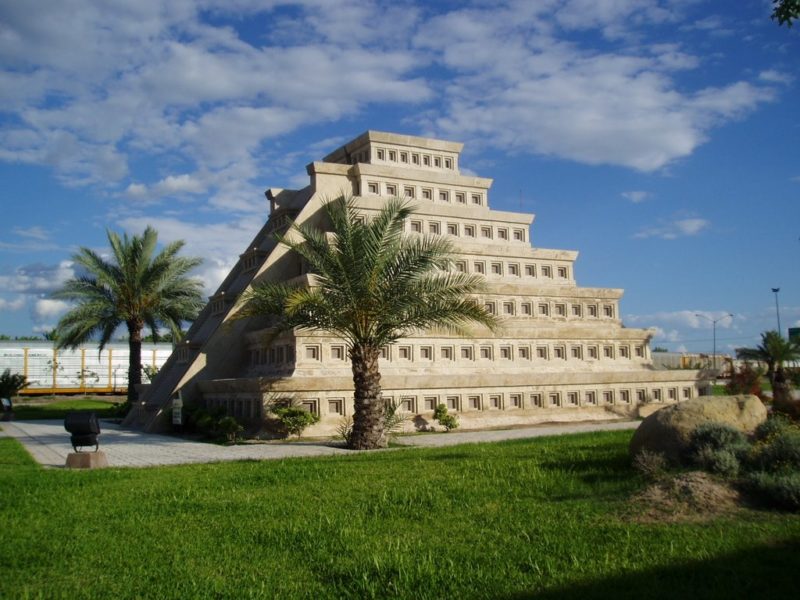Piedras Negras is the modern name for a ruined city of the Pre-Columbian Maya civilization located on the north bank of the Usumacinta River in the Peten department of Guatemala. This river forms in the border between Guatemala and Mexico, and the ruins are part of Guatemala’s “Selva Lacandona” national park. The name “Piedras Negras” means “Black Stones” in Spanish. The site has two ball courts and several plazas, and there are vaulted palaces and temple pyramids. The artistry of the sculpture of the late classic period of Piedras Negras is considered particularly fine. Along the banks of the river is a large boulder with the emblem glyph of Yo’ki’b carved on it, facing skyward.
Piedras Negras was an independent city-state for most of the Classic Period, although sometimes in alliance with other states such as Yaxchilan, some 25 miles up river; and perhaps paid tribute to others at times. Its most impressive period of sculpture and architecture dated from about 608 through 810, although there is evidence that the site was occupied as early as the 7th century BC. Piedras Negras peaked in about the 8th century AD with a maximum population of about 2,600 in the city and as much as 50,000 in the region. It was abandoned by the population and became covered in the thick jungle. Most is still covered in vegetation.
The site was first explored, mapped, and its monuments photographed at the end of the 1800′s and a further archeological project was undertaken in the 1930′s by the University of Pennsylvania Numerous monuments and works of art were removed from the site to the university, but all have been returned to Guatemala except one large artifact, Stela 14, and an alter leg, both on display in the university’s Mesoamerican Gallery. Piedras Negras is notable as the place that a Russian scientist first deciphered the Mayan hieroglyphics and where she chose to be buried.
Today the site is not developed or restored. It is a deserted location, and only a tiny portion has been explored. It is largely covered in jungle and unvisited, although there may be a caretaker in attendance. There are numerous petroglyphs, carvings, and stele found all over the site, as well as polished stone balls 1 – 2 feet in diameter similar to those found in Costa Rica.
This is a trip only for the experienced and adventuresome. It is best to take a tour if available or bring your own private guide. You must travel to the site by a long, difficult and perilous boat trip which can be arranged at Frontera Corozal, Mexico. Not all the boats are willing to make the trip, and you should be prepared for all eventualities. Have your passport since you are crossing the border from Mexico into Guatemala. Do not expect to find stores, restrooms, water, etc. Dress for hot humid weather and protect yourself with bug spray, sun screen, a hat and sturdy shoes.







Leave A Comment